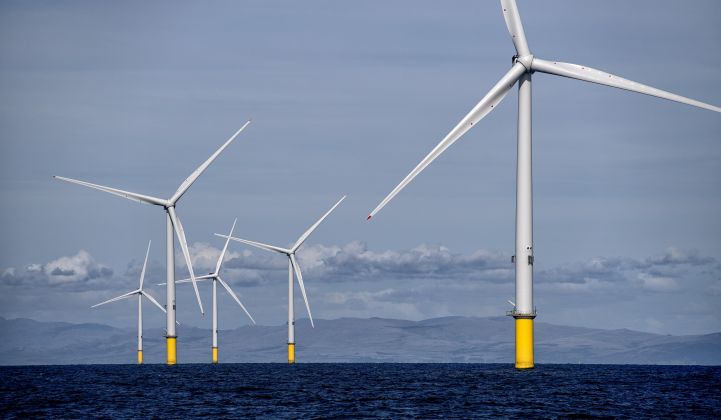Green hydrogen is the talk of the power sector these days, but it will be at least a decade before it becomes a major line item on the books of European utilities and generators, executives say.
Gigawatt-scale green hydrogen projects have sprung up on three continents recently, including the world's largest plan so far, a 4-gigawatt plant in Saudi Arabia. Governments are rushing to publish coherent strategies as they compete to build hydrogen hubs.
The European Union is sending strong long-term signals for green hydrogen with a dual electrolyzer target: The EU wants 40 gigawatts of electrolyzers installed within its own borders by 2030 and another 40 gigawatts in nearby nations to export into the EU — with North Africa one potential candidate given its proximity to Southern Europe and vast solar resources.
A range of European utilities, oil majors and gas infrastructure firms are increasingly focused on the hydrogen opportunity ahead. But various power-sector executives have added a dose of reality to expectations that green hydrogen will drive serious revenue or profits anytime this decade.
Ørsted, the world's leading offshore wind developer, is thinking seriously about green hydrogen. Ørsted participated in a recent offshore wind-plus-hydrogen tender in the Netherlands, ultimately losing to Shell and Eneco, and is part of hydrogen consortium in its native Denmark that also includes airline SAS and shipping giant A.P. Moller-Maersk.
But during the company's recent earnings call, CEO Henrik Poulsen said he didn’t expect any material financial contribution from hydrogen “this side of 2025.”
“As we start expanding some of the projects...into several hundred megawatts or even gigawatts toward 2030, it should hopefully start having a positive impact on our financials," Poulsen said. "So [in] five years, I would say very limited [financial impact]; [in] 10 years, hopefully, we should start noticing an additional value-creating growth opportunity for the company.”
European utility executives agree that green hydrogen will not mean big profits any time soon. Markus Krebber, CFO and CEO-designate at German utility giant RWE, said the industry first needs to understand where demand for hydrogen will come from.
“I don’t want to spoil the party, but if we talk about profits, especially from hydrogen, probably we need to wait a couple of years before it is relevant in terms of investments and profitability," Krebber said on his company's earnings call.
Krebber suggested the early days of wind and solar could be a suitable analogy for the development of green hydrogen. “It could easily take at least half a decade, maybe a decade, before it becomes a relevant profit figure."
E.ON, another German utility, is working on 50 different hydrogen demonstration projects to assess the technology. But CEO Johannes Teyssen expects no material impact on the company’s financials in the near future.
“Fifty projects, I believe, will make us one of the leaders in Europe as far as doing research and demonstration projects, but none of them yet has a material impact on capex and return,” Teyssen said.
(Read GTM's green hydrogen explainer here.)
Subsidies will determine hydrogen's early winners
Still, the power sector's landscape is changing rapidly, and the economic case for green hydrogen is accelerating for certain end uses, notably transport, Teyssen added.
A year ago, E.ON did not expect hydrogen to "play a major role and be economic" until much later in the decade. But now the utility holds that "there will be niches where hydrogen can be competitive...in the foreseeable future, one [or] two years," Teyssen said.
Green hydrogen cannot compete economically with established sources derived from fossil fuels today. The sector will need near-zero-cost renewable electricity and very high electrolyzer utilization rates to become competitive. Some sectors, like steelmaking, will require the incentive of subsidies in order to embrace green hydrogen, Teyssen said.
Ørsted is seeking subsidies for its green hydrogen project in Copenhagen, says CEO Poulsen. “We are going to apply for public support on the initial capital investments, and long-term, we will also be looking for other kinds of support."
"We don't know exactly what form those subsidies are going to come in, whether it will be further capex support, or whether it will be more of a production-based subsidy to allow us to give offtakers a price that is not too far away from fossil-based products,” Poulsen said.
National policies on hydrogen support are in their infancy. The European Commission has suggested a contract-for-difference program, with strike prices based on the cost of carbon abatement, as one potential mechanism. The plan was part of an array of proposals linked to its green recovery strategy.
“What they've implied regarding the development of contracts for differences could be a great catalyst for the development of green hydrogen at industrial scale,” Jean-Pierre Clamadieu, independent chairman of the board at French utility Engie, said on that company’s results call.
Details of specific mechanisms at the EU level are still in development, however. There is an expectation that, for the most part, national governments will develop their own policies with central funding from Brussels awarded to programs that match the recovery’s criteria and goals. A share of the €750 billion of green recovery funds up for grabs will likely influence the decision-making processes of local policymakers.
***
The European Commission has set out along the road to achieving a climate-neutral economy by 2050. But where do the opportunities lie and what technologies are poised to benefit?
Wood Mackenzie has launched a European Green Deal guide to help businesses understand how the European Green Deal will shape the future energy market and evaluate the potential new opportunities. Click here to find out more.




